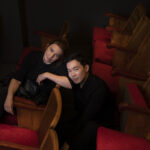
Publication standards
High Disclosure Article Template
If you want to write a highly popular article, it is essential to follow a clear structure and an accessible style without losing academic rigor. To facilitate this process, we offer you a reference model that will help you organize your content, apply editorial standards and ensure the quality of the text.If you want to write a highly popular article, it is essential to follow a clear structure and an accessible style without losing academic rigor. To facilitate this process, we offer you a reference model that will help you organize your content, apply editorial standards and ensure the quality of the text.
This document includes guidelines on structure, language, citation and formatting, allowing you to develop a manuscript suitable for publication.
RULES FOR THE PUBLICATION OF ORIGINALS IN DIVULGATION
1. Submission and format of articles
Authors should submit the article in two separate electronic files: 1) the full text of the article, including notes and bibliography, and 2) an additional file with the images, graphics or illustrations they wish to include. The files should be sent in Word format for the text and in PNG or JPEG format for the visual elements.
Each file will be identified by the author's surname in capital letters, followed by “text” for the file containing the article and “images” for the file containing the illustrations. for the file containing the article and “images” for the illustrations file. For example: PÉREZGÓMEZtext, PÉREZGÓMEZimages.
Images should be submitted in high quality. In addition, in a separate document included in the corresponding file:
- Author: name of the creator of the image.
- Licencia: tipo de licencia bajo la que se publica.
- If you have copyrights: accredit permission or payment.
- If in the public domain: include the source URL.
- If it is your own: indicate it expressly.
- If it has a Creative Commons license: specify which one and add the reference URL.
Files should be sent to the following e-mail address enmodoflamenco@gmail.com. The message may include clarifications to facilitate the work of the editors. work of the editors. Once the documents have been received, the article will be sent to the corresponding the corresponding reviewers, and the procedure will continue according to the established review rules. established for the review.
2. Article Format and Structure Standards
The title of the article should be centered in capital letters, in Times New Roman font size 18, spaced 1, Below the title, the name of the author (or authors) should be placed, in size 12 and in round and in round letters.
After the title, on the right side, an asterisk will be included referring to the line of research in which the article is included and the category within the journal. the line of research in which the article is included, and the category within the journal. The possible categories are:
- Folclore
- Flamenco (con sus líneas de investigacion):
-Origins of flamenco
-Flamenco in modernity
-Música y guitarra flamenca
-Flamenco singing and dancing
-Teaching in flamenco
-Flamenco in Latin America
The text should be presented in Times New Roman 14 font, 1 line spacing and justified.
It is important to point out that, although our journal will follow an established format for final publication on the for the final publication on the Internet, these rules for the submission of manuscripts are intended to allow the editorial team and reviewers to that the editorial team and reviewers can work with a rigorous format that facilitates the correction and evaluation of the texts. correction and evaluation of the texts.
3. Citations and bibliographic references
In our publication, footnotes will not be used. and clear in the text, following the format: (Last name Year: page). format: (Last name Year: page). In this way, references will be included in a fluent way, facilitating the comprehension and reading of the content. The following are the rules for citing within the article:
- In-text citations: Brief quotations, those that do not exceed five lines, must be in parentheses with the following format: (Last name Year: page), for example: (Giro 2008: 102). If it is necessary to refer to several page numbers, the format will be as follows: (Giro 2008: 102-104).
- Long quotations (more than five lines): In the case of longer quotations, these should be in separate paragraphs from the body of the text, without the use of quotation marks. separate paragraphs from the body of the text, without the use of quotation marks, and should be presented with an indentation in the left margin. indented at the left margin. The font size should be reduced to 13 points. As in the case of as in short quotations, the bibliographic reference should be included in parentheses at the end of the citation, as follows of the citation, as follows: (Giro 2008: 102-105).
- Textual quotations within fragments: For quotations taken from literary works or in which an author's opinion is summarized, the same format should be followed summarize an author's opinion, the same format should be followed, indicating the author's last name, the year of the year of publication, followed by the page numbers as follows: (Giro 2008: 102-10). (Giro 2008: 102-105). Quotations within the text should be enclosed in low quotation marks (” ”), and in the case of citing a part within that quotation, single high quotation marks (' ' ') should be used (' '). ')
4. Bibliography
The final bibliography of each paper will be presented under the title bibliography cited and will consist of an alphabetical list in alphabetical order. will consist of an alphabetically ordered list. References must comply with the following following guidelines:
- Books: The surname of the author(s) should be indicated, followed by the first name, the title of the work in italics, the city of publication, the publisher and the year of publication. italics, the city of publication, the publisher and the year of publication. Example: Giro, Rafael, Historia del flamenco, Barcelona: Ediciones Akal, 2008.
- Journal articles: To cite journal articles, the following format should be used: Last name(s), First name, “Title of the article in low quotation marks”, Title of the journal in italics, volume of the journal (year), pages (initial and final number of pages). Example: Sánchez, Manuel, “La guitarra flamenca en el siglo XXI”, Revista de Flamenco y Música Popular, 7 (2012), pp. 56-70.
- Electronic publications: For online publications, the same basic citation format should be followed, but with the addition of the full URL and date of publication. same basic citation format, but adding the complete URL and the date the material was consulted. the material was consulted. It is advisable to also include the DOI when available. Example: Instituto del Flamenco, Archivos de la música flamenca [online], Seville: Instituto del Flamenco, [Consultation del Flamenco, http://www.institutoflamenco.org/archivos [Accessed: 15 January 2021].
- It is reminded that quotations should always be brief and in reduced format within the text, while the final bibliography will contain all relevant details, such as author, full title, publisher, city and date of publication. title, publisher, city and date of publication.
REVIEW STANDARDS (Phases)
The publication of an article in our journal can take between one and three months, depending on various factors that influence the review process. Once the original Once the original article is sent to the general mailing, the reviewers are in charge of its evaluation. At During this period, authors will be contacted only if corrections are needed. If If no notification is received, it is an indication that the review process is progressing correctly. correctly.
It is important to note that if the article exceeds three months without receiving an update, the author may contact us to check the revision status. author may contact us to verify the status of the revision. Without However, in the meantime, there is no need for direct queries, as the review team will communicate with the authors when necessary. team will communicate with the authors when necessary.
- Fase 1 – Revisión inicial de mínimos:
Se verificará que el artículo cumpla con los requisitos ortotipográficos básicos, como
ortografía, puntuación y erratas. Si el texto no cumple con estos requisitos, será devuelto a los
autores para su corrección antes de continuar con la evaluación. - Fase 2 – Revisión de contenido: En esta fase, los especialistas evaluarán el contenido de los artículos. The review time will be a maximum of 30 working days after the article passes the initial phase of minimums (if applicable). The articles will be evaluated by one or two specialists, and if the content is multidisciplinary, additional evaluators may be used. If one report is positive and another negative, the opinion of a third evaluator will be requested. If errors are detected, articles may be returned for correction by the authors..
- Phase 3 - Proofreading and style correction: If deemed necessary, a style correction will be made, which will cover the clarity and coherence of the text, as well as orthotypographic aspects, such as the correction of spelling and grammar rules. coherence of the text, as well as orthotypographic aspects, such as the correction of citation rules in the body of the text or in the bibliography. in the body of the text or in the bibliography. The maximum time for proofreading The maximum time for orthotypographic and stylistic proofreading will be 30 working days. The revision process will be restarted once Phase 3 - Orthotypographic and style correction: If deemed necessary, a style correction will be carried out, which will cover clarity and and coherence of the text, as well as orthotypographic aspects, such as the correction of quotation rules in the body of the text or in the in the body of the text or in the bibliography. The maximum time for proofreading The maximum time for orthotypographic and stylistic proofreading will be 30 working days. The revision process will be restarted once the corrections have been delivered and positively evaluated.
- Phase 4 - Publication: Once the article has passed the previous phases of evaluation and correction, it will be published. will be published. The maximum period for publication will be approximately 30 working days from the from the final approval of the article.
AMENDMENTS AND COMMUNICATION WITH THE MAGAZINE
Authors may send the amendments made to their article, following the corrections made by the expert reviewers during the of the expert reviewers, during the review process. The period for sending these will be from Monday to Friday, between 8:00 a.m. and 8:00 p.m. If any consultation or If any inquiries or submissions are made outside these hours, they will be responded to in a timely manner. However, it is strongly However, it is strongly recommended that communications be made within the established hours to ensure efficient to ensure efficient handling.









